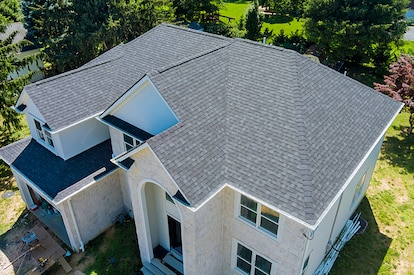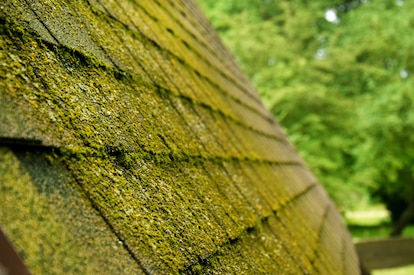
Your Home
5 Types of Roofing Technology That Make Buying a Roof Easier
For years, replacing your roof meant scheduling an in-home visit with a salesperson, looking at shingle colors on sample boards, and then waiting days or weeks to receive a written quote. But recent advancements in roofing technology have simplified the process for both contractors and homeowners. You can now quickly and easily visualize the design, estimate material costs, and establish a project plan before work begins.Whether you're buying a new roof or simply having it repaired, here are five of the latest advancements in roofing technology that could help your planning process.1. Design ProgramsWhen purchasing a new roof, choosing the color can be one of the hardest parts. The shingles you choose will protect your home for years to come, so you want to ensure the color complements your home and neighborhood. But it can be challenging to imagine what the finished roof will look like.Fortunately, technology has simplified this part of the process. Programs such as GAF Virtual Remodeler allow you to upload a photo of your home (or choose a model home) and virtually try on different colors and styles. You can feel confident about your design decisions before you purchase materials.2. Aerial ImageryContractors can use high-resolution aerial imagery to see a bird's-eye view of your home and assess your roof's current condition, depending on how recent the satellite image is. They can evaluate the roof's health, deem whether certain areas of your surrounding property need to be protected, and note any extra safety precautions that might be necessary for the work.The imagery tool helps speed up the overall process. Contractors don't need to come out to your home to understand the complexity of your roof, and you don't need to make time in your schedule for a site visit.3. Aerial Measurements and Estimating SoftwareGoing a step further, technology companies have combined aerial imagery with other software programs to calculate the measurements of a home's roof. These measurements are then input into estimation programs and used to quickly generate a material estimate for your new roof's installation.This means you can receive your project estimate within hours—not days—and you can be confident in the estimate's accuracy. Once you know the total cost of the materials, you can better plan your budget.4. All-in-One Project PlatformsIn an attempt to provide a high level of customer service and satisfaction, many roofing professionals have been tapping technologies provided by the manufacturers themselves. These all-in-one platforms streamline the roofing sales process, allowing contractors to remotely perform a number of tasks and virtually collaborate with homeowners, while ensuring they are using the most accurate and up-to-date information from the manufacturer.Using these kinds of digital tools, roofing professionals can inspect your home to create estimates. They can then meet with you virtually (or schedule an in-person consultation, if you prefer) to review your project and the related options for your home. You can also sign your contract and easily make your payment electronically.5. Online Shopping ToolsEvery day, millions of homeowners shop online for essential items that get delivered to their doors. Since there's nothing more essential to your home than its roof, why not research and buy yours online?That's exactly what GAF Master Elite Contractor Gunner Roofing owners Andrew and Eddie Prchal had in mind when they developed the Gunner Estimator. The brothers designed the program to enable homeowners to shop online for a roof. With a focus on improving the overall customer experience, the Prchals wanted to take the hassle out of purchasing a roof. The result is a roofing technology that provides a seamless process for homeowners.Creating an Intuitive ExperienceAll of these technological advancements help to streamline the process of getting work done on your roof, saving you time and potentially money. Whether you're getting your roof repaired or completely replaced, roofing technology can assist. Ready to get started on your new roof? Look for a certified contractor,* with access to roofing technology programs provided by GAF.*Contractors enrolled in GAF certification programs are not employees or agents of GAF, and GAF does not control or otherwise supervise these independent businesses. Contractors may receive benefits, such as loyalty rewards points and discounts on marketing tools from GAF for participating in the program and offering GAF enhanced warranties, which require the use of a minimum amount of GAF products. Your dealings with a Contractor, and any services they provide to you, are subject to the GAF Contractor Terms of Use.
By Authors Karen L Edwards
March 18, 2024



